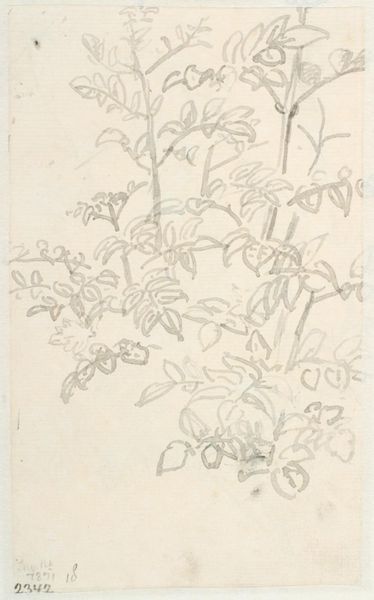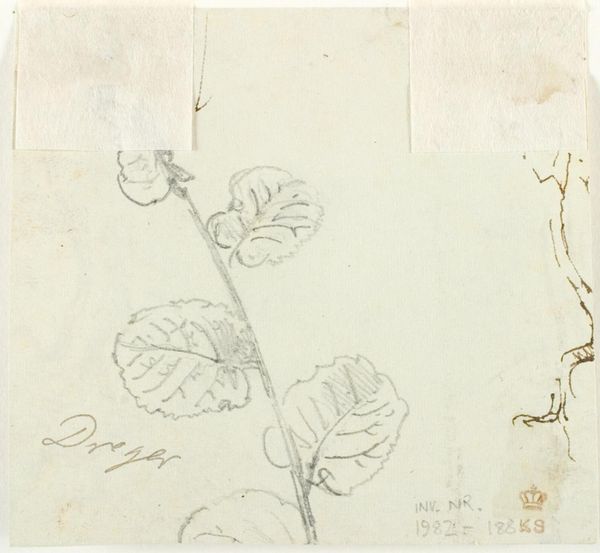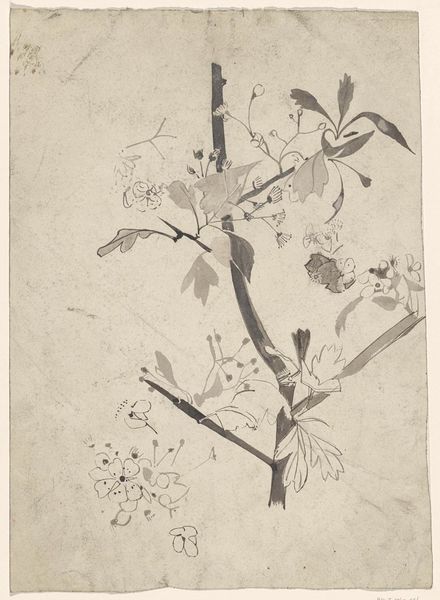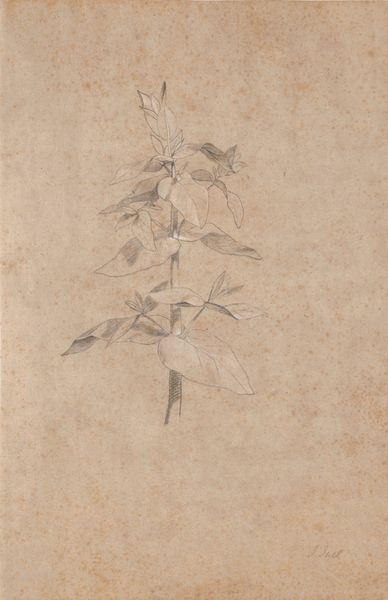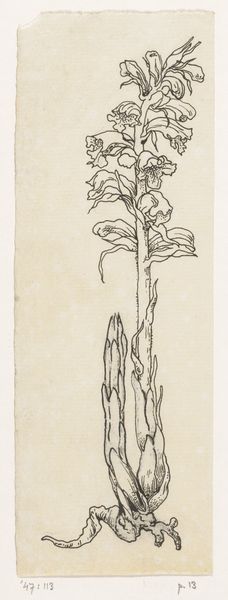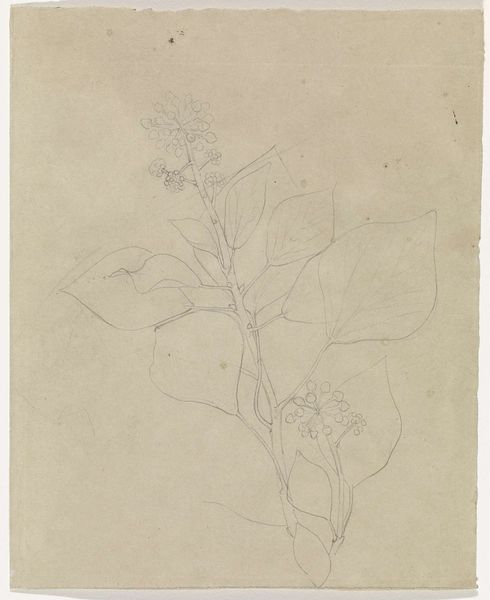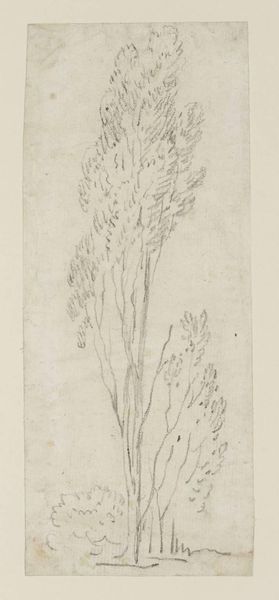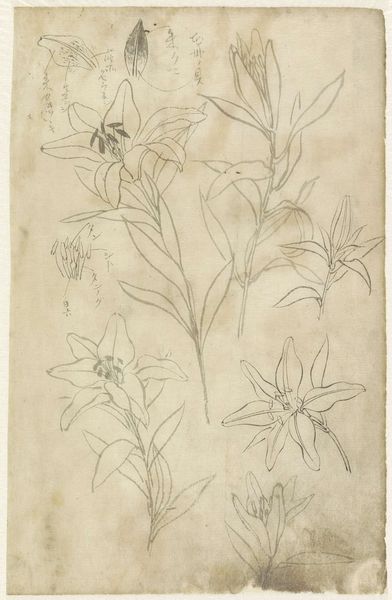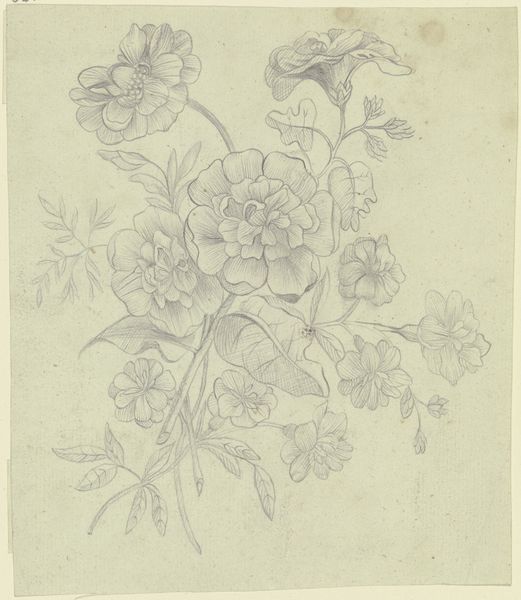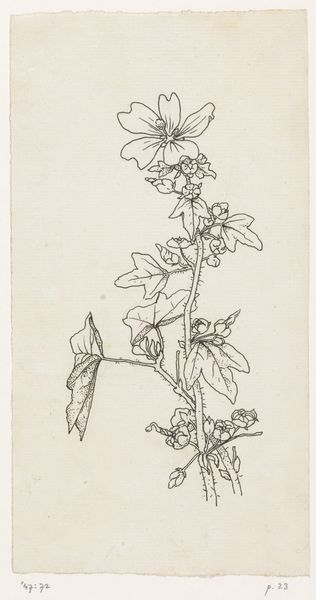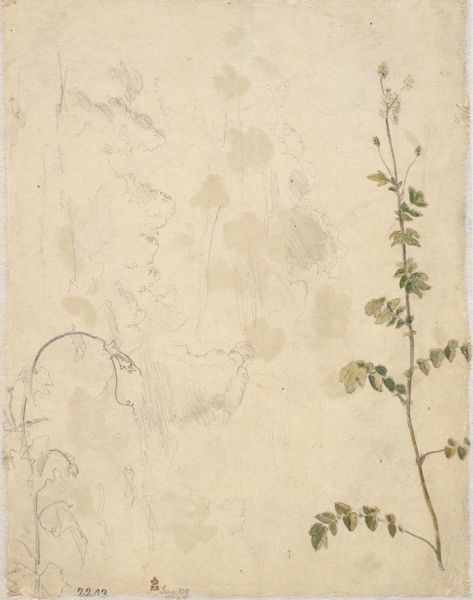
drawing, pencil
#
drawing
#
romanticism
#
pencil
#
line
Dimensions: 171 mm (height) x 78 mm (width) (bladmaal)
Curator: This delicately rendered study of plants comes to us from Dankvart Dreyer. It’s aptly titled "Plantestudie," and was created sometime in the 1830s. The medium here is pencil on paper, and what I find fascinating is Dreyer’s attention to the subtlest of details. Editor: Immediately, I'm drawn to its ethereal quality—like a faded memory of a meadow. There's something fragile and almost wistful about these thin, wavering lines. You can almost feel the paper trembling under the artist’s hand. Curator: Absolutely. Dreyer worked within the Romanticism movement, so that sense of personal expression, particularly through nature, makes perfect sense. The drawing style is also very economical in the use of line. Think how effectively he uses line to communicate shape, shadow and structure here. Editor: Yes! You almost expect it to rustle if a breeze were to come through the gallery. But in addition to that delicacy, I can see that, in the 1830's, drawing was deployed to teach empirical understanding, by artists as well as amateur, for documenting what can be found in the world. Curator: That's a great point. Scientific observation often went hand in hand with artistic practice back then. "Plantestudie" resides here at the SMK, the Statens Museum for Kunst, so scholars have had an opportunity to research it carefully in order to know what went into this art. Editor: What's interesting, looking at it that way, is the apparent imperfection! Look how he renders some details, and not others; he emphasizes structure, yes, but maybe doesn't focus so much on specific form? Almost as if capturing its essence was more important. Curator: Precisely. And even the untouched parts of the page almost speak—the blank space emphasizes how one finds beauty even in the weeds by the wayside, by studying the character of natural objects Editor: Yes. So looking at it that way makes it resonate as an intensely political exercise. And I find I read this quite differently, thinking about its importance as documentation. I had looked at this a long time, before recognizing that context! Curator: Isn't that wonderful? To continually rediscover fresh nuances, seeing art history through different, ever evolving, lenses... it's what keeps me coming back to this very drawing year after year. Editor: And what I like about this the most is how accessible, unassuming the whole effect seems to be. As a method for knowing something intimately. It is available to anyone at any time. And of course that accessibility masks, precisely, the real power of looking carefully.
Comments
No comments
Be the first to comment and join the conversation on the ultimate creative platform.


